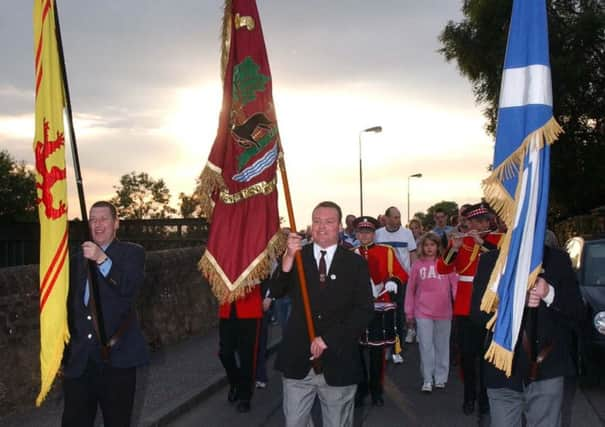Brief history of the Marches


The celebration is a full day of family fun, well kept traditions and showcases the community spirit that thrives in Linlithgow.
The reason for the Marches dates back to days of old where it was vital for a community to make sure that its boundaries were intact.
Advertisement
Hide AdAdvertisement
Hide AdWithin carefully delineated bounds, rules and privileges of a settlement held sway: the burgh could collect taxes and custom duties, make its own by-laws, hold weekly markets, lease out mills and insist on standards of behaviour and craft-control.
Like other royal burghs across the country, Linlithgow guarded the area it governed however unlike most other Scottish communities Linlithgow still annually patrols its boundaries.
On the first Tuesday after the second Thursday in June, the whole community comes together to celebrate this tradition which bind the town together with a shared sense of history and local pride.
The reason for the particular day is not certain.
It may be connected to the date of certain Medieval religious festivals or Fast Days and the church traditionally did play an active part in the ceremonies of marking and blessing the boundary stones.
Advertisement
Hide AdAdvertisement
Hide AdOn the Friday before the big day, the Town Crier (Davie Duncan), parades the High Street from the Low Port to the West Port.
Accompanied by flutes and drum and other followers, he proceeds to Linlithgow Bridge Primary School, stopping every so often to inform the townsfolk that their presence is required the following Tuesday to participate in the Riding of the Town’s Marches.
In his mock, Medieval clothes, the herald also stresses the importance of the occasion by announcing that everyone must attend in their best “carriage and equipage, apparel and array” – under a non-attendance penalty of one hundred pounds Scots.
On Saturdays before the Marches there are Deacon’s Nights which see the Deacon’s Court installed.
Advertisement
Hide AdAdvertisement
Hide AdThe Court of the Deacons of the Ancient and Royal Burgh of Linlithgow is a voluntary organisation made up of male and female deacons from town organisations.
Their prime function is to finance, organise and manage the Riding of the Marches.
And with costs rising over £40,000 it is no easy role. Through dances, Burns Suppers, Street Fairs, raffles and donations the necessary money is raised to pay for the many expenses in the town’s historic events.
The role of the Deacon was created around 40 years ago when town councils, who usually prepared the Marches, were disappearing so the Deacon’s Court was created to fill the gap.
Advertisement
Hide AdAdvertisement
Hide AdThey represent and speak for their organisation, parade along the High Street so the public can recognise their status and on the day itself the Deacons attend the Provost’s Breakfast, lead their organisation in the celebrations and ensure proper behaviour is maintained.
With Deacon’s installed, the money raised and the town ready to celebrate, the biggest day of the year kicks off at 5am where residents are awakened by flute and drum.
The celebration takes the town through Linlithgow, Linlithgow Bridge, Blackness before the finale at Low Port in Linlithgow.
The day ends when the Provost declares: “Safe out, Safe In”.